German poultry farmers face tight regulations
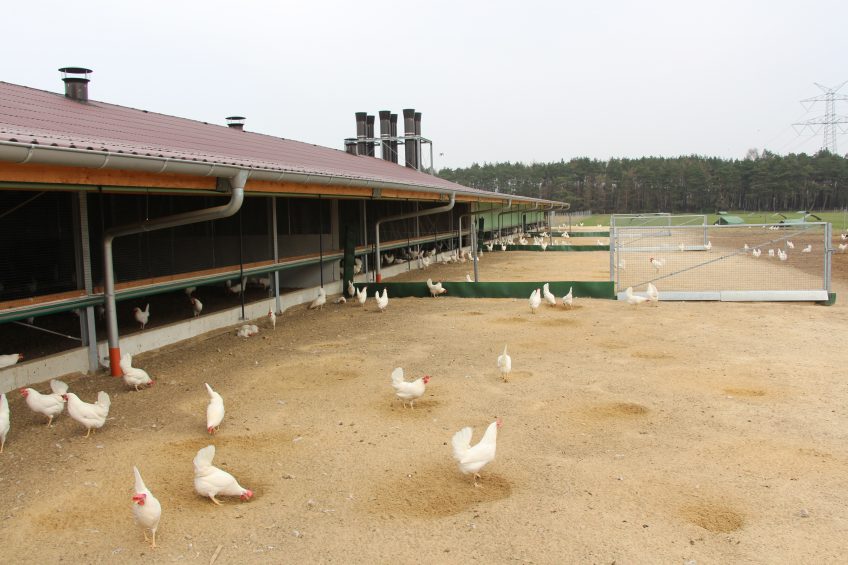
Poultry farmers sometimes complain that the permit application process in their country is tricky. Organic poultry farm Zum Hebel from Germany experienced that first hand. Currently, Germany almost has impossible rules and regulations.
In 1990 Anton zum Hebel (52) from the German town of Haren took over the farm of his parents. This involved a closed breeding establishment with some 70 sows and 60 to 80 acres of arable farming. An expansion in arable farming would need a massive investment, but the farm had to scale-up in order to survive in the future. Because Anton’s wife, Claudia, had a preference for poultry, they choose to extend in that branch. In 2013 a license was requested for 14,900 Freiland hens. Anton says, “The reason for going organic was a simple calculation. Organic just pays a lot more. It took three years before we got all the necessary paperwork for the new house. It took a long time because the municipality of Haren wants to discourage the expansion of farms.”
Many rules
The main issue in getting building authorisation was the vicinity of a protected forest reserve. Anton adds, “The local government was looking at everything. You also need to write an extensive nature conservation report. They are also very strict regarding the fire safety of the house and the drainage.” In Germany you have to install special, additional (expensive) fans and batteries, so that in case of fire the exhaust system can still keep running for 90 minutes, so that the hens don’t choke. Also a special access road had to be constructed, so that the fire department can reach the house quickly. However, this road could not be constructed on the gas pipelines that also ran right past the poultry houses of Zum Hebel. According to Anton in Germany it is certainly not easy to get a license. “If you must make an environmental Impact Report, you need an elutriator (airfilter) as a standard. In Germany at the moment you have to, if you apply for a license, justify everything down to the last screw.”

Jansen Outside Volière
Initially the family Zum Hebel wanted to build a Big Dutchman volière system in the house. Eventually, it became a Jansen Outside Volière of Jansen Poultry Equipment in Holland.“Changing the barn equipment within the authorisation application took no less than six months. The reason for putting a Jansen system in there is that on this system you can keep more hens per square metre,” states Anton. There are currently 11,380 organic Freilandhennen on the system. According to Claudia another advantage of a Jansen Outside Aviary system is that you can get better into the system. “Which is important to me because I take care of the hens most of the time.” The barn is fully prepared to put an elutriator behind the air exhaust, there’s also a central extraction system installed. At the moment the fans blow the exhaust air into the atmosphere through high chimneys, without extra filtration.

In Germany regulations are super tight and everything is checked and controlled, according to the family Zum Hebel. Claudia: “The government regularly checks if you leave the shutters open at night. If necessary, they will check very early in the morning. Checks are also done by mandatory readouts of the climate computers. They will check how long you leave the lights on. On average, you can say that every month we are checked.” These are the inspectors from KAT (Verein für kontrollierte alternative Tierhaltungs-formen e.V.), the German control organisation for food safety and the German SKAL. Anton adds, “In Germany, you can choose from about 10 SKAL organisations. That seems beneficial, because then you choose a less demanding variant of course. However, this doesn’t make sense, all SKAL organisations must forward their reports to the German control organisation for food safety.”

Extremely wide wintergarten
The poultry house of the family is 35 metres wide and 80 metres long (incl. wintergarten). The wintergarten is 10 metres wide, on both sides. Anton: “The wintergarten is larger than posted in the KAT-requirements, although they don’t count it as barn surface. The 10 metre requirement comes from the water sanitation body in Germany.” The barn itself is only 15 metres wide, pretty narrow, but otherwise the family should have taken additional fire prevention in the middle of the barn. As for hens, the family has the ISA Dekalb White of Ab Ovo bio from Delbrück in Gemany. Claudia says, “We have chosen a white hen because of the presumed good health, it produces many eggs per hen housed and has a good feed conversion. And they are also easy hens to manage.” The hens (1st flock) are currently at 37 weeks and have a laying percentage of 97.2%. They eat 121 g/feed/day and lay eggs with an average weight of 60.5 g. The family is largely above the standards of the laying calender. The loss amounts, so far, is less than 1%.
PROFILE
Name: Anton (52) en Claudia (46) zum Hebel
Location: Haren (Germany)
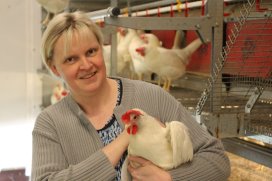
A new house with 11,380 Dekalb White ISA Brown organic laying hens. The first flock is currently at 37 weeks with a 97.2% laying percentage, feed consumption is 121 g/feed/day and eggs with an average weight of 60.5 g.
Special egg elevator
As a packing machine they have chosen a Prinzen Farm pakker PSP 30. What’s quite special is the Dutch egg elevator of Smolenaers. “It’s much cheaper than a robot and it basically works just as fast,” states Claudia. Furthermore they have a bedding material remover which is powered by a chain. The intake valves are from Tulderhof and the fans are from Reventa, which have a maximum capacity of 24,000 m3 per hour. The barn computer is a Hotraco Orion. “Setting was simple,” jokes Anton. “That was done by Wouter Katier of Reudink feed mill.” Claudia is satisfied with the Hotraco app. “I can really see everything that is happening in the house on that app, and customise, if necessary. For example the temperature or the run through of the feed. Quite handy. However, I must, go to the stable, to control the shutters by sight.”
 Beheer
Beheer

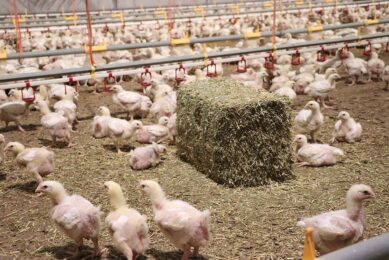
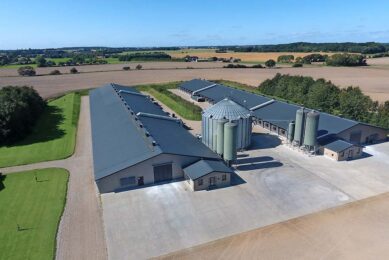
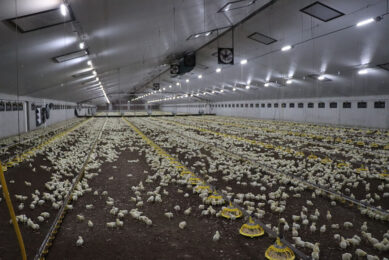




 WP Admin
WP Admin  Bewerk bericht
Bewerk bericht